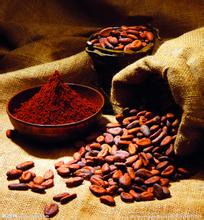Ethiopian Coffee Variety Flavor description introduction of High-quality Coffee beans in producing areas
In February 1977, Lieutenant Colonel Mengistu Haier Maryam (MENGISTU HAILE MARIAM) launched a military coup and served as Chairman and head of State of the interim military Administrative Council. In 1979, the Ethiopian Labor people's Party Organizing Committee, mainly composed of soldiers, was established to implement an one-party system. In 1984, the Ethiopian Workers' Party was formed according to the Soviet Communist Party model. In September 1987, Mengistu announced the dissolution of the "interim military Administrative Council", the end of military rule, the establishment of the "people's Democratic Republic of Ethiopia" and the establishment of a new parliament, with Mengistu as president and head of government.
In March 1988, the rebel "Eritrean people's Liberation Front" (EPLF) and the "Tigre people's Liberation Front" (TPLF) launched an attack on government forces, and a large-scale civil war broke out. In 1989, the Eritrean people's Liberation Front occupied most of Eritrea. On May 28, 1991, the EGF troops, mainly the Tigre people's Liberation Front, entered Addis Ababa and the Mengistu regime collapsed.
A large amount of coffee production (95%) is done by small shareholders, with an average yield of 561 kg per hectare. For centuries, minority holders of Ethiopian coffee farms have been producing a variety of high-quality types of coffee. The secret to producing high-quality coffee is that coffee growers have developed a coffee culture in a suitable environment through generations of repeated learning about the coffee growing process, which mainly includes farming methods using natural fertilizers, picking the reddest and fully ripe fruits and processing the fruits in a clean environment. The differences in the quality, natural characteristics and types of Ethiopian coffee all stem from differences in "altitude", "region", "location" and even land types. Ethiopian coffee beans are unique due to their natural characteristics, including "size", "shape", "acidity", "quality", "flavor" and "flavor". These characteristics give Ethiopian coffee a unique natural quality. Usually, Ethiopia is always used as a "coffee supermarket" for customers to choose the kind of coffee they like, Ethiopian washed coffee Yega Sheffield G1 G2.
The highest levels of Sidamo (Yirgacheffe, Sidamo) are level 2 and level 3 (G2, G3).
Most of the sun-processed coffee in eastern Ethiopia are grade 4 or grade 5 (G4, G5).
In many cases, level 4 coffee is marked as level 5 in order to reduce taxes. The current classification is not uniform and messy, because there are also first-and second-tier (Grand G2) Yirga Cheffe processed by tanning, but the highest level of Harald (Harar) is level four (G4).
The coffee producing areas of Ethiopia are Sidamo, Harald and Sidamo, Harrar and Yirgacheffe. Sidamo and Harrar are provinces and divisions. Sidamo is located in the south of Ethiopia bordering Kenya, and Harrar borders Somalia in the east of Ethiopia. Although Yirgacheffe is a community in the Sidamo region, due to soil composition and water content and other reasons, its coffee is considered to be the best coffee in Ethiopia was first discovered by shepherds in Ethiopia's Kaffa region, and the name coffee evolved from Kaffa. Ethiopia is also known as the hometown of coffee, Ethiopia is the hometown of coffee. If you don't think Ethiopian coffee is the best coffee in the world, you don't know enough about coffee. At present, there are three most important origin of coffee beans in the world, namely: Arabica, Robasta and Liberia. And many people do not know that this Arabica coffee tree accounts for 70% of the world's coffee production. Almost all the world-famous coffee varieties are Arabica species, and the country of origin of this coffee tree is Ethiopia, the star on the African continent. This kind of coffee grows in areas ranging from 1400 to 1800 meters above sea level. Arabica grows coffee and picks it directly on the plantation. Non-instant coffee powder products

Important Notice :
前街咖啡 FrontStreet Coffee has moved to new addredd:
FrontStreet Coffee Address: 315,Donghua East Road,GuangZhou
Tel:020 38364473
- Prev

Jamaica Coffee Flavor Description Production Characteristics Fine Coffee Bean Variety Introduction
The earliest Jamaica Blue Mountains refer to coffee produced by Wallenford Farm and Silver Hill Farm, with the former having the best quality; today's Jamaica Blue Mountains refer to coffee beans grown in the Blue Mountains region east of Kingston, the capital of Jamaica (more than 1000 meters high). Now the largest estate in the country, M.B.C. F is printed on its barrels, and its products are often found in Taiwan. Jamaica
- Next

Characteristics of Flavor and Taste in Rosa Coffee Variety producing area introduction to the country of origin of boutique coffee bean manor
In January 2016, Aiyi Manor sent samples of these 33 new coffee varieties to the United States, asking the world coffee industry leader, former president of the American Fine Coffee Association (SCAA) and one of the founders of the Coffee quality Institute (CQI) TedLingle to test the cup. the cup test scores of the first five varieties were 84.25,84.5,84.5,85.5 and 87, with the highest score.
Related
- Detailed explanation of Jadeite planting Land in Panamanian Jadeite Manor introduction to the grading system of Jadeite competitive bidding, Red bid, Green bid and Rose Summer
- Story of Coffee planting in Brenka region of Costa Rica Stonehenge Manor anaerobic heavy honey treatment of flavor mouth
- What's on the barrel of Blue Mountain Coffee beans?
- Can American coffee also pull flowers? How to use hot American style to pull out a good-looking pattern?
- Can you make a cold extract with coffee beans? What is the right proportion for cold-extracted coffee formula?
- Indonesian PWN Gold Mandrine Coffee Origin Features Flavor How to Chong? Mandolin coffee is American.
- A brief introduction to the flavor characteristics of Brazilian yellow bourbon coffee beans
- What is the effect of different water quality on the flavor of cold-extracted coffee? What kind of water is best for brewing coffee?
- Why do you think of Rose Summer whenever you mention Panamanian coffee?
- Introduction to the characteristics of authentic blue mountain coffee bean producing areas? What is the CIB Coffee Authority in Jamaica?

